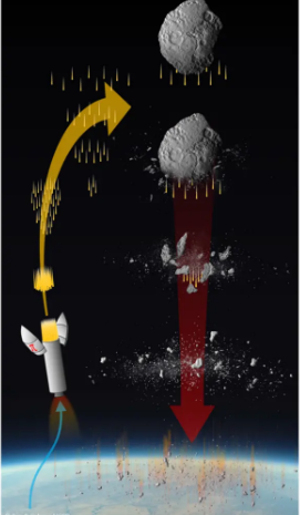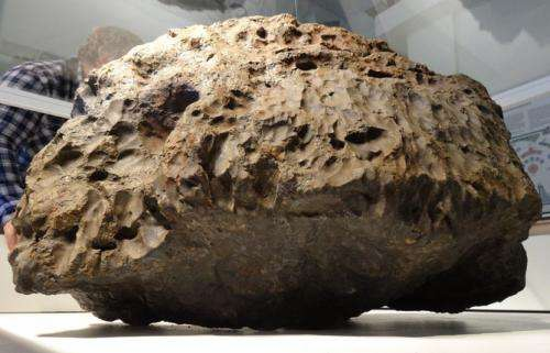From the Chelyabinsk meteorite of 2013 to Asteroid 2023 NT1, we are quickly learning that mapping and tracking near-Earth objects in space isn’t a foolproof way to protect our planet from a space-delivered catastrophe.
No space-tracking system whether in orbit or on Earth saw the Chelyabinsk rock before it entered the atmosphere. Why was that? Two reasons have been given. The first is that we don’t pick up on space rocks coming at us from all orbital angles particularly if coming in from the direction of the Sun in daylight. The second is that the Chelyabinsk rock was too small for Earth-based telescopes to detect and that it was a stony chondrite composed of silicates and dark materials which made it non-reflective. Our best estimate on size was that Chelyabinsk was between 12 and 13,000 metric tons and 20 metres or 66 feet in diameter.
It approached the atmosphere during daylight, flying from east to west, which made it virtually invisible. Even if it had hit the atmosphere on the nightside of the planet, our ground-based telescopes would not have detected it until it was within 135,000 kilometres (less than 84,000 miles) of Earth. Travelling at 69,000 kilometres (42,700 miles) per hour, that would have given us less than 2 hours warning before it struck.
Chelyabinsk broke up before fragments hit the ground. It was its explosion that caused damage to buildings but fortunately didn’t result in any human deaths for the city of 1.1 million.
Asteroid 2023 NT1 is another story. It was first detected two days after it made its closest approach, within 100,000 kilometres or 61,000 miles from Earth (a quarter of the distance from the Moon). Described to be as large as a commercial passenger jet, it measured over 60 metres (200 feet) in diameter. Like the Chelyabinsk meteorite, it came at us from the Sun making it undetectable. If it had entered our atmosphere, the impact would have been significantly larger than what occurred over Russia in 2013.
Planetary Defences Today
NASA’s DART (Double Asteroid Redirection Test) mission launched in November 2021, was the first test of what could become standard practice to defend the planet from errant space rocks. In September 2022, the spacecraft deliberately plowed into Dimorphos. a companion space rock to the near-Earth asteroid named Didymos. The collision was a planetary defence test to see if the kinetic energy created by the impact of a projectile could alter the trajectory of its target. Based on observations since the collision, Dimorphos has seen its orbit of Didymos change. Four years from now a European Space Agency mission will once more visit Didymos to measure the changes DART caused.
Today, we can account for approximately 40% of the space rocks that are near Earth. That means objects are flying by our planet, often well within the orbit of the Moon, for which we have no record. We remain blind to space rocks as big as a bus or a commercial passenger jet when approaching from the daylight side of our planet.

A proposed method to defend the planet from a space rock first detected only hours from Earth has been given the acronym, PI. It stands for “Pulverize It.” This is different than DART which was designed to nudge a space rock off course. PI (see image above) would involve launching a kinetic mass at hypervelocity to smash an incoming meteorite, comet, or small asteroid. Based on the angle of intercept, the fragments created would either burn up in the atmosphere before striking the Earth or miss the surface of the planet entirely. The resulting airbursts would produce atmospheric shockwaves with far less effect than Chelyabinsk. The longer the warning time, the less likely the impacted and shattered object will intersect with our atmosphere. But, in the case where the window of warning is short like Chelyabinsk or Asteroid 2023 NT1, the damage to anything on the surface would be dramatically mitigated.
What PI proposes is heightened detection combined with short-term mitigation systems. Objects the size of Chelyabinsk impact Earth about once a century. Objects like 2023 NT1 could strike Earth about once a millennia. The authors of the PI strategy write:
“While 2023 NT1 currently poses no threat to Earth, it is conceivable that similar objects could go undetected and result in short-warning (or no-warning) impacts. In situations like these, deflection-based mitigation strategies fall short of preventing damage if warning times are not sufficiently long; the time taken to plan, assemble, launch, and deflect is likely to be on the scale of years if not decades.”
Hence the DART strategy that NASA has demonstrated is insufficient. What is needed, therefore, is “a robust planetary defence system” prepared to deal with a range of threat sizes and warning times, that is layered, reliable, and tested.
















